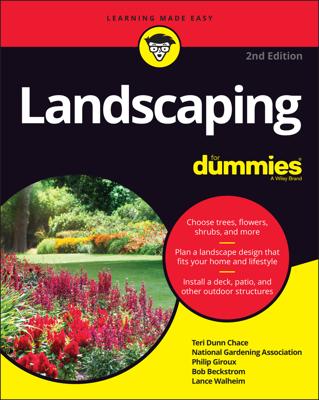Think of your landscape plan as a tool to help you get a handle on the price tag of your project, establish your priorities, and make sure that all the separate parts of your landscape — the barbecue pit, a meditation pool, the kid’s area — are present and accounted for. Transferring dreams to paper requires more than a little imagination, but with some practice on perspective, you can tell whether your plan is an aesthetically-pleasing one.
In order to draw your plan, you may want to pick up some large-size paper, a pencil, and an eraser. More complicated drawing tools help you keep your lines straight and maintain consistent sizes for the elements of your landscape. (Alternatively, you may want to invest in a computer landscape design package.) Consider using graph paper, which has a printed grid of squares that makes transferring real-life elements to a flat piece of paper much easier. You can, for example, transfer your measurements to the graph paper using a 1-foot to 1⁄4-inch ratio — a 1-foot-long line in real life covers 1⁄4 inch on graph paper. If necessary, tape sheets of graph paper together, so that your plan fits.
Before you can start adding your wonderful new landscape features, you have to map what’s already there. Here’s how:
Measure the lengths of all edges of your property and draw the outline of your yard on paper.
Taking measurements is a pain in the neck, but you’re far ahead of the game when you get estimates for what this new design is actually going to cost. Measurements eliminate guesswork and give you the confidence of knowing that your plan will work.
Invest in a 100-foot tape measure to avoid the frustration of marking off 12-foot lengths and adding them up to get a reading on your 400-foot side boundary. Enlist a helper when you’re ready to measure to make the job go quicker. If you have the original map of your property, skip the measuring and trace that. No need to reinvent the wheel.
Measure and draw in the outline of your house.
Be sure to place the house exactly where it sits on your lot.
Measure and add any outbuildings that currently exist.
After that, draw in other elements and show their locations in relation to known measurements.
Measure and draw in whatever paving is already in place and that you want to keep.
Don’t assume that the right angles and parallel lines that are formed by walls, fences, driveways, and property lines are always perfect. Verify the distance between objects with as many measurements as you can.
Measure and draw existing fences, big trees, hedges, perennials, vegetable gardens, and any other current features you want to keep right where they are.
Indicate the precise location of a tree trunk or plant by measuring the distance from it to two known points, such as two corners of the house.
Go to your local copy shop and run off a half-dozen or so copies of your base plan.

